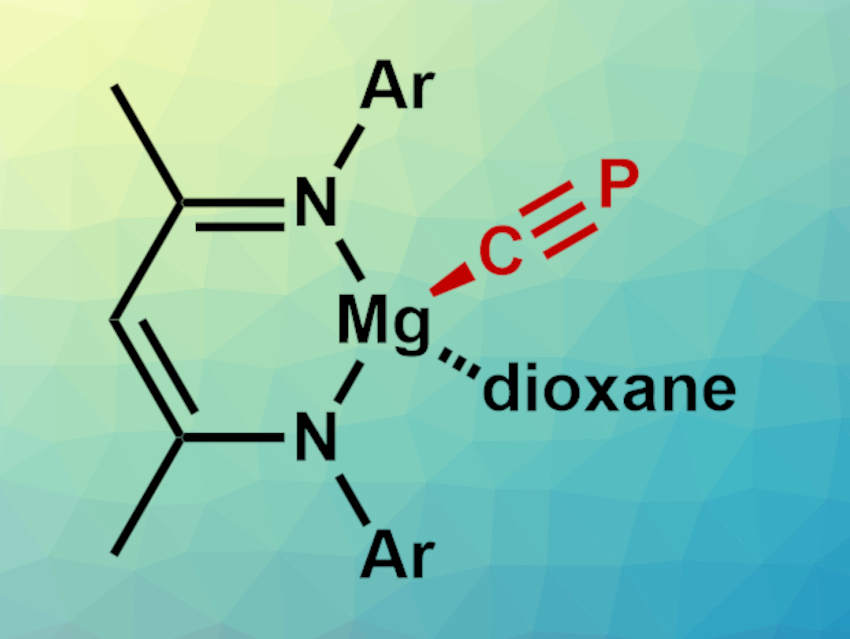Cyanide ions (CN–), nitriles (R–CN), and isonitriles (R–NC) are widely used in chemistry. Heavier analogs of cyanide groups, such as C≡P units, are much less common. The anion, CP–, or cyaphide, for example, has not been isolated in the form of simple salts because it is too unstable. Instead, it has only been reported as a ligand in metal complexes, i.e., Pt, Ru, and U complexes. However, these complexes are fairly unreactive, and thus, not very useful in synthetic chemistry.
Jose M. Goicoechea, University of Oxford, UK, and colleagues have synthesized a magnesium–cyaphido complex that can be used as a cyaphide transfer reagent. This complex (pictured), [Mg(DippNacNac)(CP)(dioxane)] (DippNacNac = CH{C(CH3)N(Dipp)}2, Dipp = 2,6-di(isopropyl)phenyl), was synthesized from [Na(dioxane)x]PCO (PCO = phosphaethynolate). This compound was reacted with tris(isopropyl)silyl trifluoromethanesulfonate (iPr3SiOTf) to give iPr3SiO–CP. A reduction with [Mg(DippNacNac)]2 then gave the desired complex.

The product can be used to transfer a CP– ion to another metal complex via salt metathesis. Using this approach, the team created cyaphido complexes of Sn, Au, and Co, for example. According to the researchers, this is the first example of a cyaphide transfer reagent.
- A Cyaphide Transfer Reagent,
Daniel W. N. Wilson, Stephanie J. Urwin, Eric S. Yang, Jose M. Goicoechea,
J. Am. Chem. Soc. 2021.
https://doi.org/10.1021/jacs.1c04417




